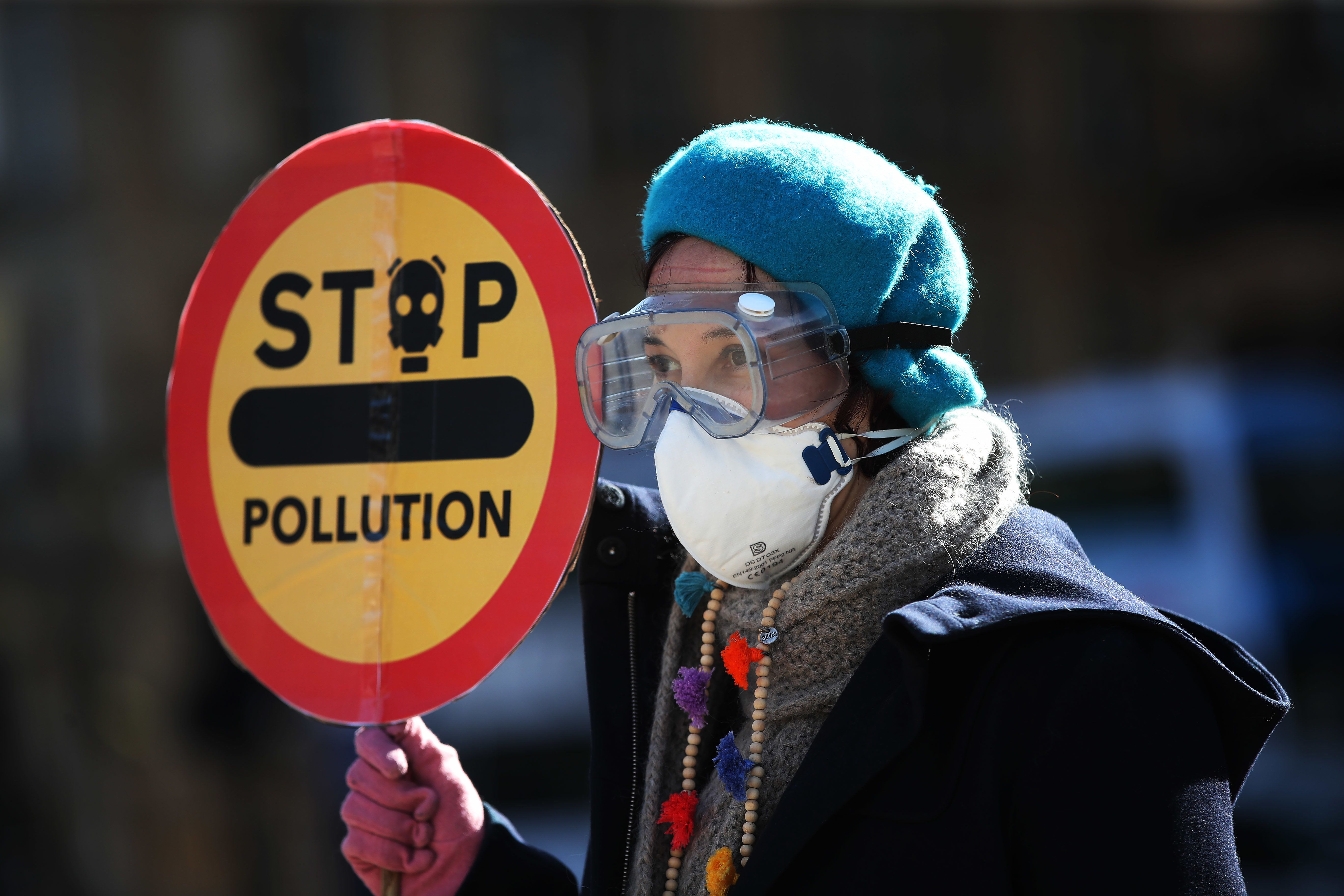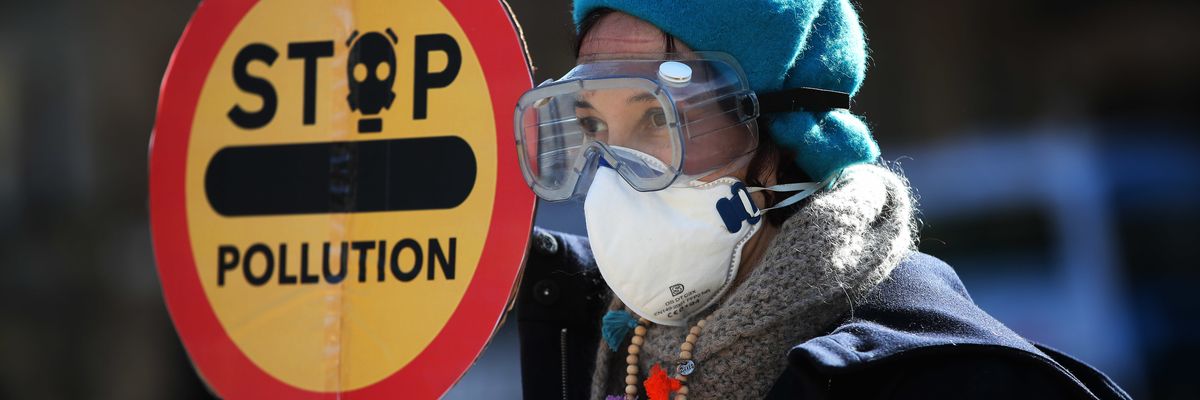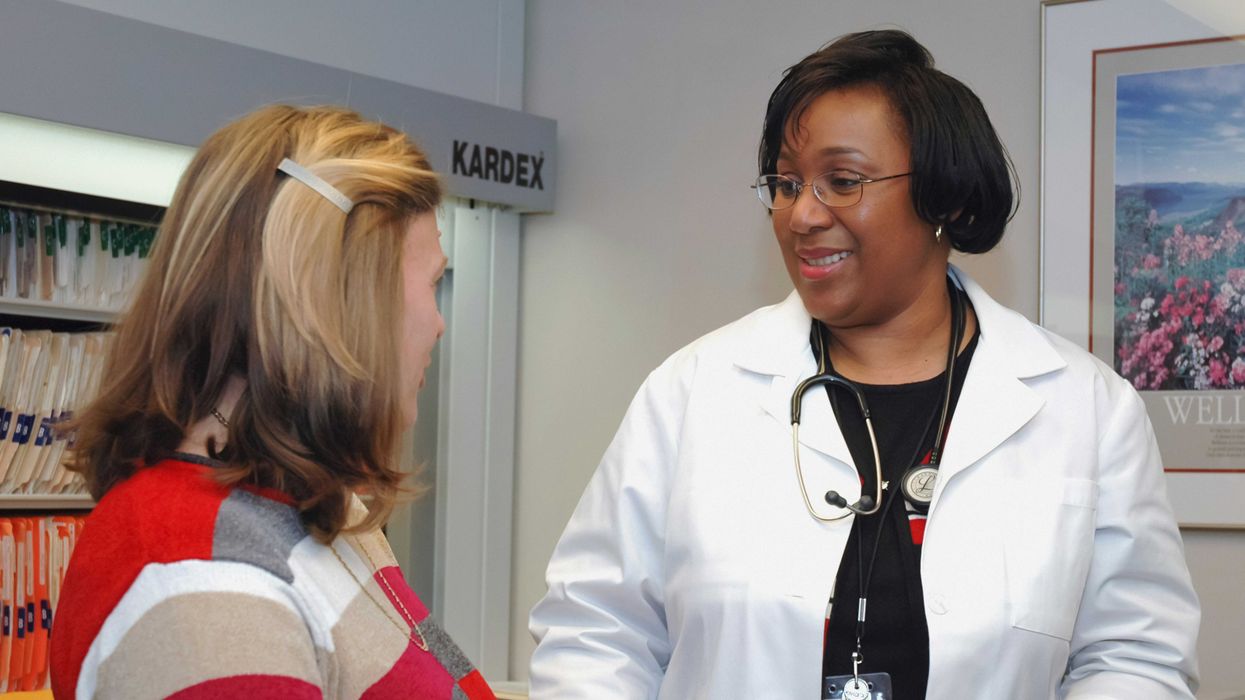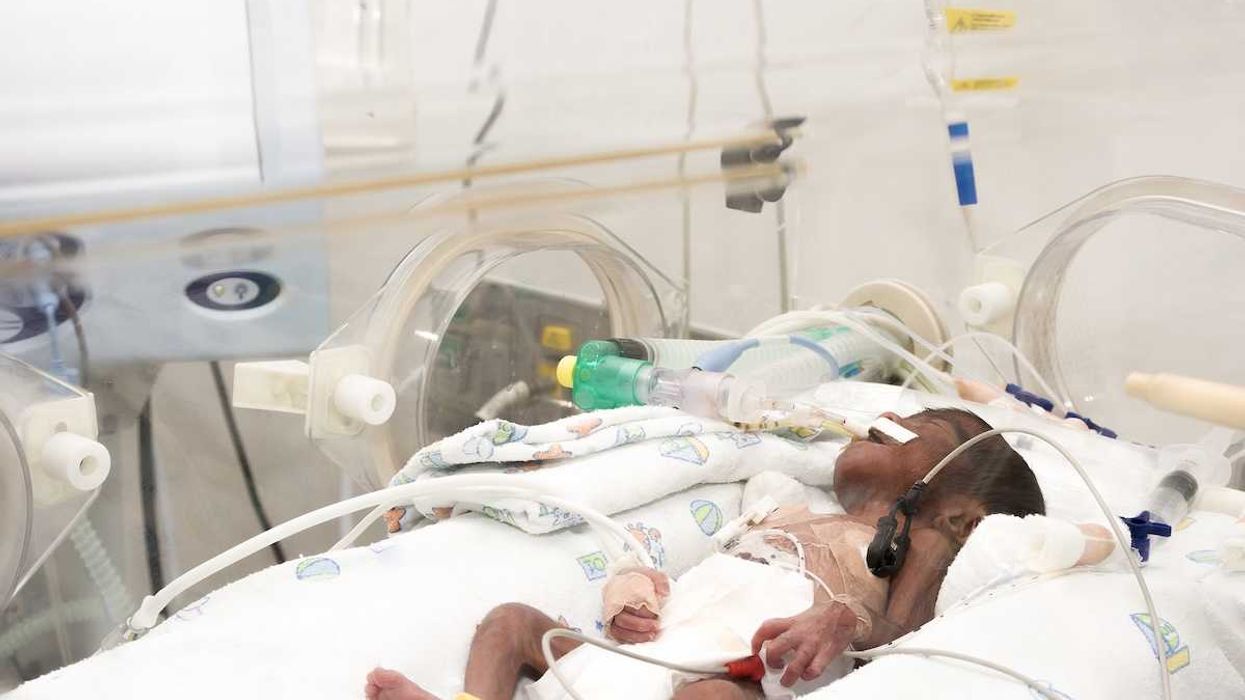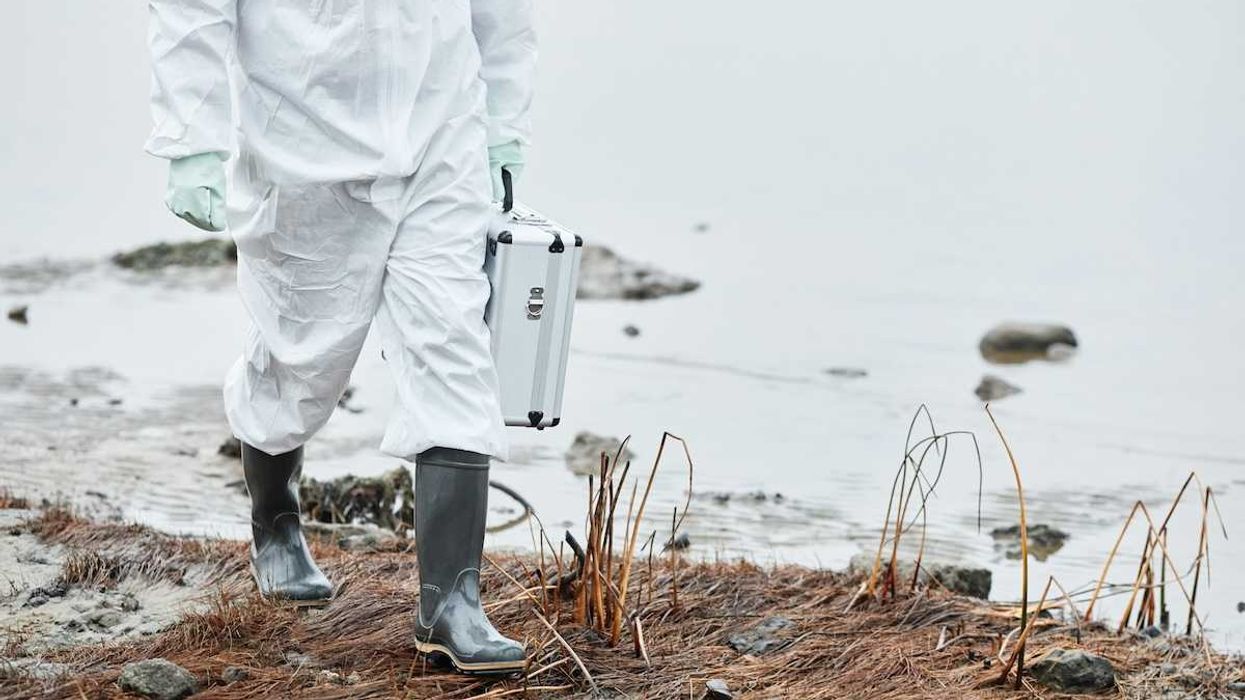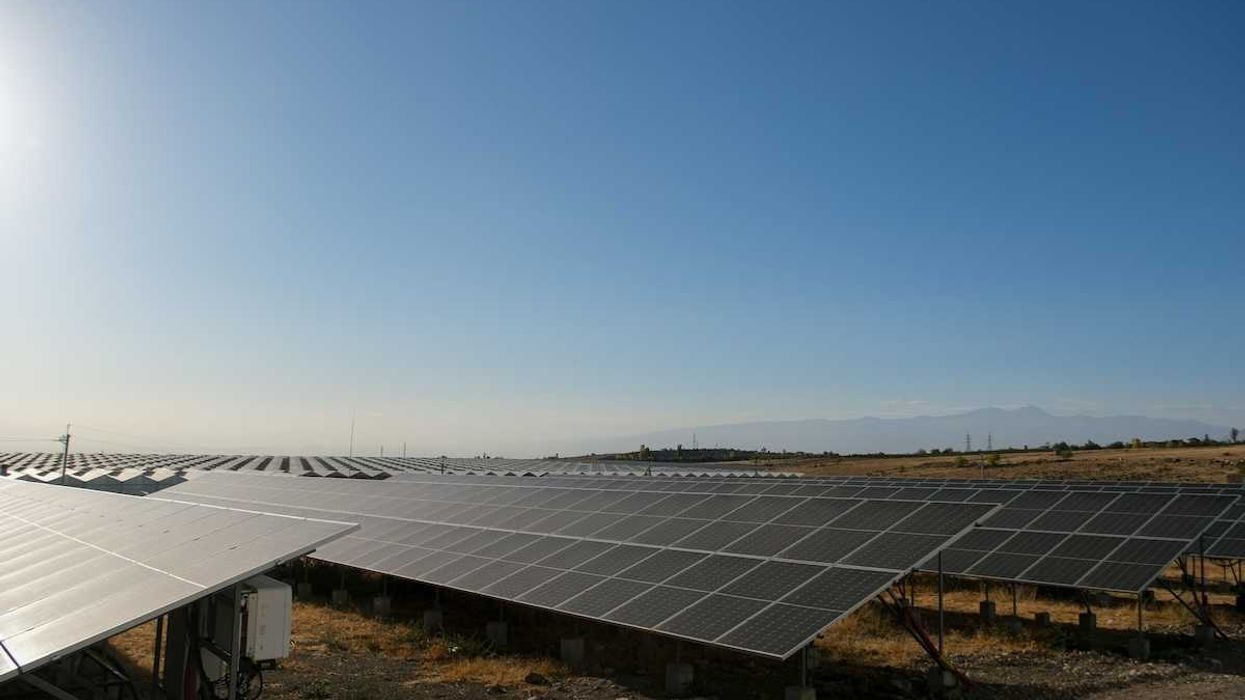Editor's Note: This is story is part of our ongoing series on cancer and air pollution in Southwestern Pennsylvania.
PITTSBURGH—Cancer experts from around the country gathered here this week to present a body of research with a weighty conclusion: Environmental exposures remain a key factor in the region's elevated cancer rates and tackling these pollutants could significantly reduce risks for residents.
And, while addressing the region's notorious pollution is a steep challenge, those assembled—including local health officials, Council members and community leaders—left the event pledging their renewed focus on reducing exposures in the name of cancer prevention.
The event, "Cancer and the Environment: Priorities for Research, Clinical Practice and Policy," brought around 150 doctors, clinical researchers and community leaders to the Phipps Conservatory and Botanical Gardens, where attendees had a view of both the waterfalls and palm trees of the tropical rainforest room and of snow falling over distant row houses through the windows.
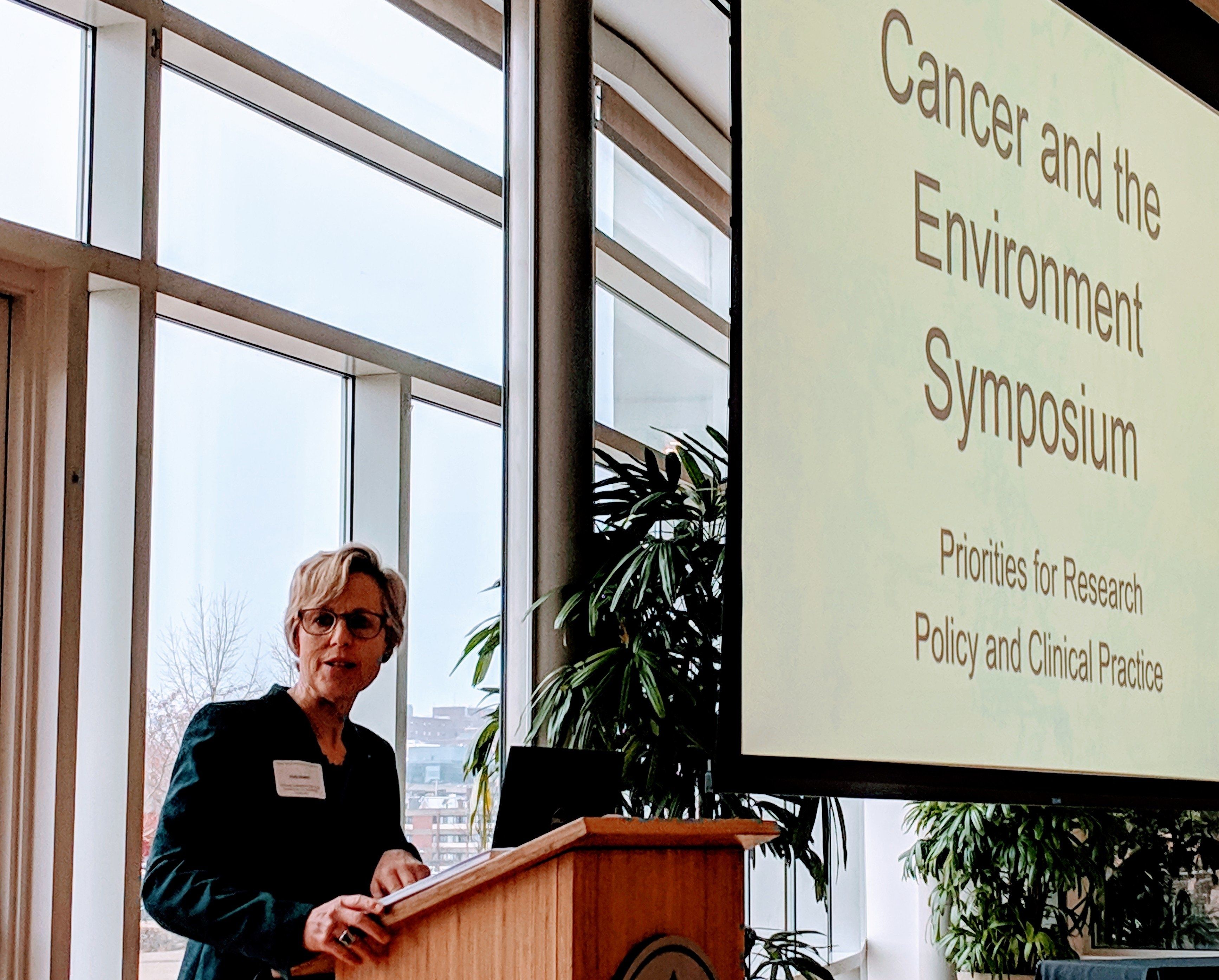
While the setting was pleasant, the topic was difficult.
"We know that harmful chemicals in our air, our water, our food, and even the products we use are important contributors to cancer," said Dr. James Herman, a medical oncologist at UPMC Hillman Cancer Center who specializes in the treatment of lung cancer. "As medical professionals, it's critical that we include these factors in our prevention efforts."
Even if no one smoked, we’d still be getting lung cancer

Credit: Richard Clapp
Most current cancer prevention strategies are focused on individual behavior: Diet, exercise, and smoking.
"There's no question that these are important causes of cancer," Dr. David Kriebel, a professor and director of the Lowell Center for Sustainable Production at the University of Massachusetts, told EHN, "but we're concerned the degree to which we focus on smoking, obesity and exercise may lead people to conclude that the solution to the cancer epidemic lies solely in individual actions and lose sight of how socioeconomic and political decisions could be made that would also help prevent cancer."
Kriebel explained the vast majority of cancer prevention resources go to smoking cessation, so he and his colleagues decided to look at what cancer rates would look like if smoking was taken out of the picture, both nationally and in Allegheny County (which encompasses Pittsburgh).
"We found that if we took smoking out of the picture entirely, rates do go down quite a bit, but more than half of the cancers blamed primarily on smoking, like lung and bladder cancer, still occur at the national level," Kriebel said.
"As for Pittsburgh, he added, "If we could eliminate smoking entirely, Allegheny County would still be in the highest 10 percent of all U.S. counties with respect to these cancers."
That's likely due to a number of factors, Kriebel said, but one probable driver is air pollution, since Allegheny County is in the top 2 percent of U.S. counties for risk of cancer from carcinogens in the air.
Kriebel also noted that when you remove smoking from the picture nationally, the recent reduction in cancer rates disappears. In other words, we're not doing anything effective to curb causes of cancer other than smoking.
"If you remove the progress we've seen as a result of people quitting smoking, we've made no headway whatsoever in the so-called war on cancer," Kriebel said. "That doesn't mean we shouldn't focus on tobacco control. But it does mean it's a big mistake to stop there."
James Fabisiak, a toxicologist at the University of Pittsburgh Graduate School of Public Health and director of the Center for Healthy Environments and Communities, noted that particulate matter pollution—of which Pittsburgh has notoriously high levels—accounted for between 100,000 and 225,000 lung cancer deaths worldwide in 2010 (the most recent year for which data is available), and that living amidst air pollution has been found to lower the rate of survival for lung cancer.
A sense of urgency

Dr. Margaret Kripke, professor emerita of the University of Texas MD Anderson Cancer Center, delivered the keynote address. In 2010, Kripke served on the President's Cancer Panel that produced a report on chemical exposures as causes of cancer, marking the first time the subject was covered in the organization's 40-year history.
The report was met with opposition at the time. Because it's difficult to trace cancer directly to environmental exposures, Kripke said, some of her colleagues believed their resources should instead be devoted exclusively to focusing on individual behaviors—which she referred to as a "blame-the-victim approach to cancer prevention."
The landscape has improved some since then, Kripke said, but research on prevention is still underfunded and undervalued. She noted that while the science to trace individual cancer cases to environmental exposures is nascent, research has shown that fewer cancer cases occur in communities where exposure to environmental carcinogens is reduced—but that can be difficult to advocate for.
"Curing someone or being cured is viewed as a personal triumph, so everyone is focused on treatment," Kripke said. "Prevention doesn't have a face. We don't know who we prevented cancer in, which is why it's easier to advocate for the fight for a cure than it is for prevention."
Dr. Ted Schettler, the science director for the Science and Environmental Health Network, expanded on the idea of reducing risk for the whole population.
"Why one person has lung cancer is a very different question from why do some populations have more lung cancer than others," he said. "But it's certainly just as important. A variety of strategies can reduce cancer incidence, so we ought to be looking at all of them."
Schettler explained that cancer isn't caused by a single event or exposure, but a set of conditions or events that produces cancer in an individual person. He explained this using a pie graph with a different cancer cause in each slice—things like inherited genetics, high body mass index, mutated genes from tobacco carcinogens or from exposure to air pollution.
"If even one component of the pie is missing," he explained, "there's no cancer. That means there are opportunities for prevention at any time until the final component is added, which often happens many years after the first one."
Dr. Mark Miller, co-investigator with the Center for Integrative Research on Childhood Leukemia and the Environment at the University of California at Berkeley, presented on environmental exposures that contribute to childhood leukemia, including air pollution, chemical solvents and certain pesticides. Knowing what we do about these types of exposures, he said, there's no reason to wait for more science to take action.
"If we can reduce this risk for children even a little bit by reducing exposures," he said, "that's a big thing."
He pointed to efforts to reduce deaths from Sudden Infant Death Syndrome (SIDS) as an example. After discovering that twice as many infants died from SIDS while sleeping on their stomachs, he explained, scientists wanted to launch a public awareness campaign. Some researchers strongly opposed the idea since they didn't yet know why fewer infants died when sleeping on their backs. Despite their opposition, the "back to sleep" campaign was launched anyway in 1994—and there's been a more than 50 percent reduction in SIDS across the U.S. as a result.
We still don't know exactly how SIDS happens, Miller said, but that doesn't actually matter when it comes to saving lives.
"If we decide to wait until we understand exactly why things like air pollution and certain chemical exposures cause cancer to start reducing our exposures," he said, "we could be waiting a very, very long time."
Promises for action

From left: LuAnn Brink, Matt Mehalik, Anita Prizio, Fred Brown, Linda B. Robertson, Patricia Opresko, Molly Jacobs. (Credit: Kristina Marusic)
At the end of the day, attendees were invited to discuss action steps with a panel of regional leaders.
"I learned so much today," said Anita Prizio, Allegheny County Council Representative. "Especially from the talk on taking smoking out of the picture. I wish my other Council members were here."
She promised to take what she'd learned back to County Council, and push for more comprehensive air pollution monitoring and aggressive enforcement of the clean air regulations in the region.
LuAnn Brink, chief epidemiologist at the Allegheny County Health Department, vowed to take what she'd learned back to the Health Department, particularly with regard to community education.
Fred Brown, president and CEO of the Forbes Fund, urged the group to invite members of underserved communities into the conversation as equal partners at the table.
"We could do all the research in the world," he said. "If our communities don't understand it, you're going to have false positives… We need to be thinking not about programmatic change, but about systematic change."
Dr. Patricia Lynn Opresko, clinical researcher and professor at the University of Pittsburgh School of Public Health, promised to play more of a role in changing the region's narratives, saying, "Even just by talking to people in neighborhood, I can help change this idea that we have to choose between jobs and a safe environment."
By the end of the session, the group assembled had agreed to continue working together to advance the cause of cancer prevention in the region through ongoing communication, strategic meetings, and community engagement.
While the enthusiasm in the room was palpable, the group also acknowledged the magnitude of the challenge ahead.
"One thing we know from studying how systems work is that nothing changes unless the routines in those systems change," said Matt Mehalik, executive director of the Breathe Collaborative, "and it takes multiple levels of effort and exertion to shift them."
Editor's Note: An earlier version of this story stated that Allegheny County is in the top 3 percent of U.S. counties for cancer from air toxics. It is actually in the top 2 percent, according to the 2013 Pittsburgh Regional Environmental Threat Analysis.
- Cancer in Pittsburgh: Prevention lags as pollution persists - EHN ›
- The “twin crises” of high cancer rates and exposure to toxic chemicals in Pittsburgh - EHN ›
- Childhood cancer survivors are more likely to end up in the hospital from air pollution - EHN ›
- It’s time to talk about cancer prevention - EHN ›
- Insecticide linked to increased breast cancer risk - EHN ›
- Paused Ohio chemical recycling plant puts spotlight on Appalachia as “prime target” for the controversial practice - EHN ›

